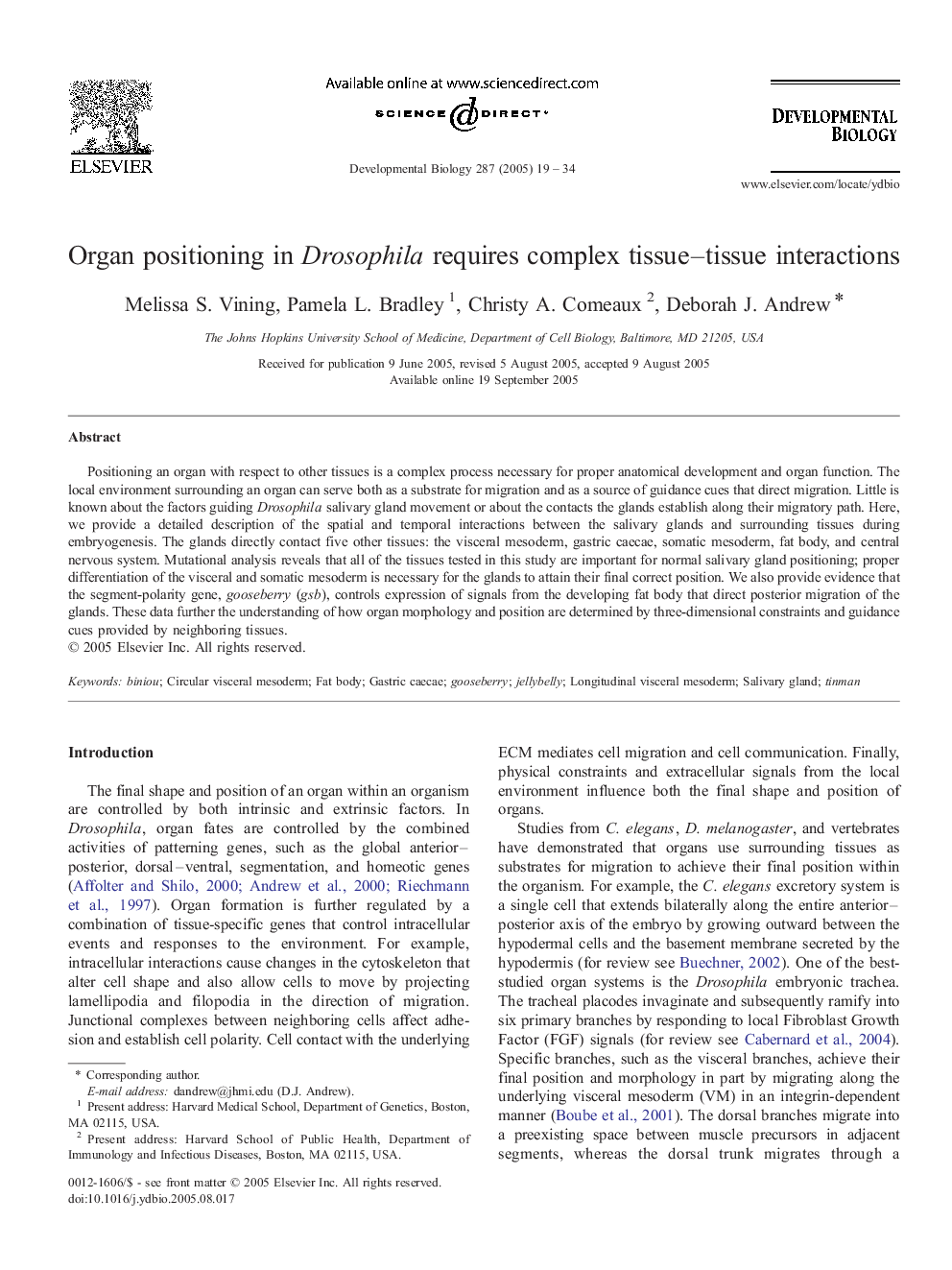| کد مقاله | کد نشریه | سال انتشار | مقاله انگلیسی | نسخه تمام متن |
|---|---|---|---|---|
| 10933848 | 1093869 | 2005 | 16 صفحه PDF | دانلود رایگان |
عنوان انگلیسی مقاله ISI
Organ positioning in Drosophila requires complex tissue-tissue interactions
دانلود مقاله + سفارش ترجمه
دانلود مقاله ISI انگلیسی
رایگان برای ایرانیان
موضوعات مرتبط
علوم زیستی و بیوفناوری
بیوشیمی، ژنتیک و زیست شناسی مولکولی
بیولوژی سلول
پیش نمایش صفحه اول مقاله

چکیده انگلیسی
Positioning an organ with respect to other tissues is a complex process necessary for proper anatomical development and organ function. The local environment surrounding an organ can serve both as a substrate for migration and as a source of guidance cues that direct migration. Little is known about the factors guiding Drosophila salivary gland movement or about the contacts the glands establish along their migratory path. Here, we provide a detailed description of the spatial and temporal interactions between the salivary glands and surrounding tissues during embryogenesis. The glands directly contact five other tissues: the visceral mesoderm, gastric caecae, somatic mesoderm, fat body, and central nervous system. Mutational analysis reveals that all of the tissues tested in this study are important for normal salivary gland positioning; proper differentiation of the visceral and somatic mesoderm is necessary for the glands to attain their final correct position. We also provide evidence that the segment-polarity gene, gooseberry (gsb), controls expression of signals from the developing fat body that direct posterior migration of the glands. These data further the understanding of how organ morphology and position are determined by three-dimensional constraints and guidance cues provided by neighboring tissues.
ناشر
Database: Elsevier - ScienceDirect (ساینس دایرکت)
Journal: Developmental Biology - Volume 287, Issue 1, 1 November 2005, Pages 19-34
Journal: Developmental Biology - Volume 287, Issue 1, 1 November 2005, Pages 19-34
نویسندگان
Melissa S. Vining, Pamela L. Bradley, Christy A. Comeaux, Deborah J. Andrew,